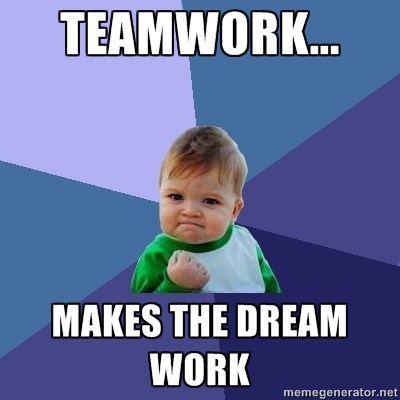What is Human Capital Management
Human Capital Management (HCM) is managing employees of an organization. This enables the increase in the productivity of the employees.
The whole process of Acquiring, Training, Managing, and Retaining employees for any organization is called Human Capital Management.
Read Also: What Are the Recent Trends in Human Resource Management?
The job of a Human Capital Management is not as simple as the explanation we just gave you. The Human Capital Management is also responsible for the HR helpdesks, employee self- service portals, manager self-service portals and intranet portals.
Some of the significant job descriptions comprise of various supports including, but not limited to:
- Recruitment
- Onboarding
- Workforce management
- Competency management
- Performance management
- Compensation strategy
- Time and expense planning
- Learning and Development
- Contingent workforce management
- Organization visualization
- Reporting and analytics
- Workflow
Tips to have a successful Human Capital Management team
Now that we know what falls under the bracket of Human Capital Management let’s learn how to do it well. When handling numerous employees, it could be challenging to ensure employee satisfaction on every level.
It is constantly seen that employees feel that organizations are only concerned about turn over and not the employees. While this may not be true, it is crucial for the employees to realize this.
Here are some tips that we believe will help you in ensuring that you’re doing it right:
1. Communications from the Leadership team
We, as employees, often think that managers often just sit in their cabin all day and impose suggestions on us. Well, as hard as this might be to take in, it is not the case.
At least for most of the time. However, it is essential that managers discuss with employees before making decisions so that employees do not feel suggestions are imposed on them.
Employees will have immensely valuable feedbacks about the organizations that may turn out to be effective.
This may never reach the management if there is no platform for the employees to express their ideas.
2. Employee engagement
It is important for the employee to have an adequate amount of work on a day to day basis. Too much or too little work will definitely mess up with their workflow.

Human Capital Management also includes ensuring they have an adequate amount of work to enable a seamless workflow.
3. Appreciation
Everyone feels the need to be appreciated for their efforts. This is something the Human Capital Management has to ensure attention is paid to. It is important for the managers to appreciate their employees on their work so that they continue to work hard.

4. Learning
We covered this before. It is important to make sure that employees have all the required information for them to work on their projects. Training is the way to go to ensure this is in place.
There are In-House, and Outsourced training programmes organizations can enrol their employees in. This will let them work as an individual with minimum dependency.
Experienced employees can also be enabled to train the newbies. This also works as an appreciation for the experienced employee. See? There’s more than one way to get things done.
Oh! Don’t design training just for the sake of it. That’s no use to anybody. In turn, that will bite you back in more way than you can think of. Training is conducted to benefit both employee and employees.
5. Growth
This is a no brainer. Any employee, irrespective of them being tenured or not, it is important for them to grow within the organization.

Read Also: 15 Tips For HR Managers To Create A Sustainable Company Culture
Constant growth helps improve knowledge. Upskilling oneself is important; one of the easiest ways of doing so is through constant growth in the field.
This will also ensure that employees do not find the work monotonous.
6. Hiring
You shouldn’t be too quick to tag someone as a bad employee. Believe us; there is no such thing as a good or a bad employee. It’s always the right candidate for the position. It is the job of Human Capital Management to ensure that the right employee is chosen for the right position.

You cannot have a substandard hiring process and blame the employee for not performing.
7. Employees leave their managers, not the company
This is a famous one. We are sure that many of you’ll have heard this somewhere through your corporate career. This is most definitely true too.Now, this is crunch time for Human Capital Management. Training a newbie is one thing, training a manager on their skills, that’s a whole other ball game. But well, that has to be done.
Skip level meetings are also a great way to understand how employees feel about their managers.
There’s another way to look at this. If a manager quits, there is a good chance that at least a couple of employees that worked under him will quit. The same logic applies here; only, the Human Capital Management may need to look at the higher management on this.
8. Teamwork
Let’s say you get through hiring and training with flying colours. Ensuring that each team member gels well with the others is as important as these. It is the responsibility of Human Capital Management to ensure that the best of each employee is brought out.

Contrary to popular belief, having a diverse workspace will help employees learnabout different cultures and become friends with each other.
Human Capital Management needs to assist managers in ensuring that all employees are happy with the team, and issues do not get in between the productivity of the programme.
9. Transparency
You reap what you sow. Have you ensured that all processes are transparent and easily accessible to employees? That shows that you trust them. They trust you when you trust them.
Human Capital Management has to work in great lengths to ensure that all employees feel trusted. This will make the employees work well for the organization voluntarily. Well, what more can you ask for?
10. Objectives
It is important for all employees to be aware of the Vision (No, we are not taking Marvel here). The Vision of the organization, the individual project they are working in.
It is important for all employees to understand the purpose of their work. Unclear Vision will only produce poor results.
11. Fun times
Employees spend most of their time in the offices. It is important for them to have some fun times in the office. Fun activities, games, movie nights, team dinners, team outings are just some of the ways to improve your employee’s happy quotient.
These fun activities work as great stress busters for the employees. A happy employee makes the company happy.
Human Capital Management must allot production time in such a way that there is time for employees to indulge in these fun activities.
12. Technology
Employees can only be productive if their tools are up-to-date. Trying to cut down on the technology is definitely not the way to go if productiveness is what you have in mind.
Having outdated or substantial technology and tools will only move things along slower and frustrate the employees. Human Capital Management needs to have a policy in place to replace any and all outdated technologies.
13. Employee profiles
Having an employee profile comes with more benefits than you assume. Employee profiles are a great wayto ease the hiring process.
New hires, re-joining, transfers from a different office is all a lot easier if the employee profile is in place. We knew that already. However, it also helps Human Capital Management togather employee performance.
Information such as employee performance reviews, disciplinary actions, customer feedbacks will all be accessible from one single space.
No data will be lost from an individual since it’s all stored in central storage.
14. Tracking
Having a ton of policies and procedures in place is not the end of the subject for Human Capital Management. It is important to ensure that these procedures are followed.
Human Capital Management needs to invest time to evaluate if all the actions implemented are actually followed by all employees.
Read Also: How WiFi Attendance Makes HR Manager’s Job Simple
It is important for this evaluation to take place constantly. All the time and effort will wash down the drain should there be a lapse.
Conclusion
Conclusively, it is important for Human Capital Management to realize that their job profile does not merely end at hiring the right candidate for the right profile, allotting vacation days or performance appraisal to employees.
Growth and development of the organization through the employees is their major task. A happy employee makes the company happy is the idea that should always drive Human Capital Management. Only this will bring real success to the organization.

